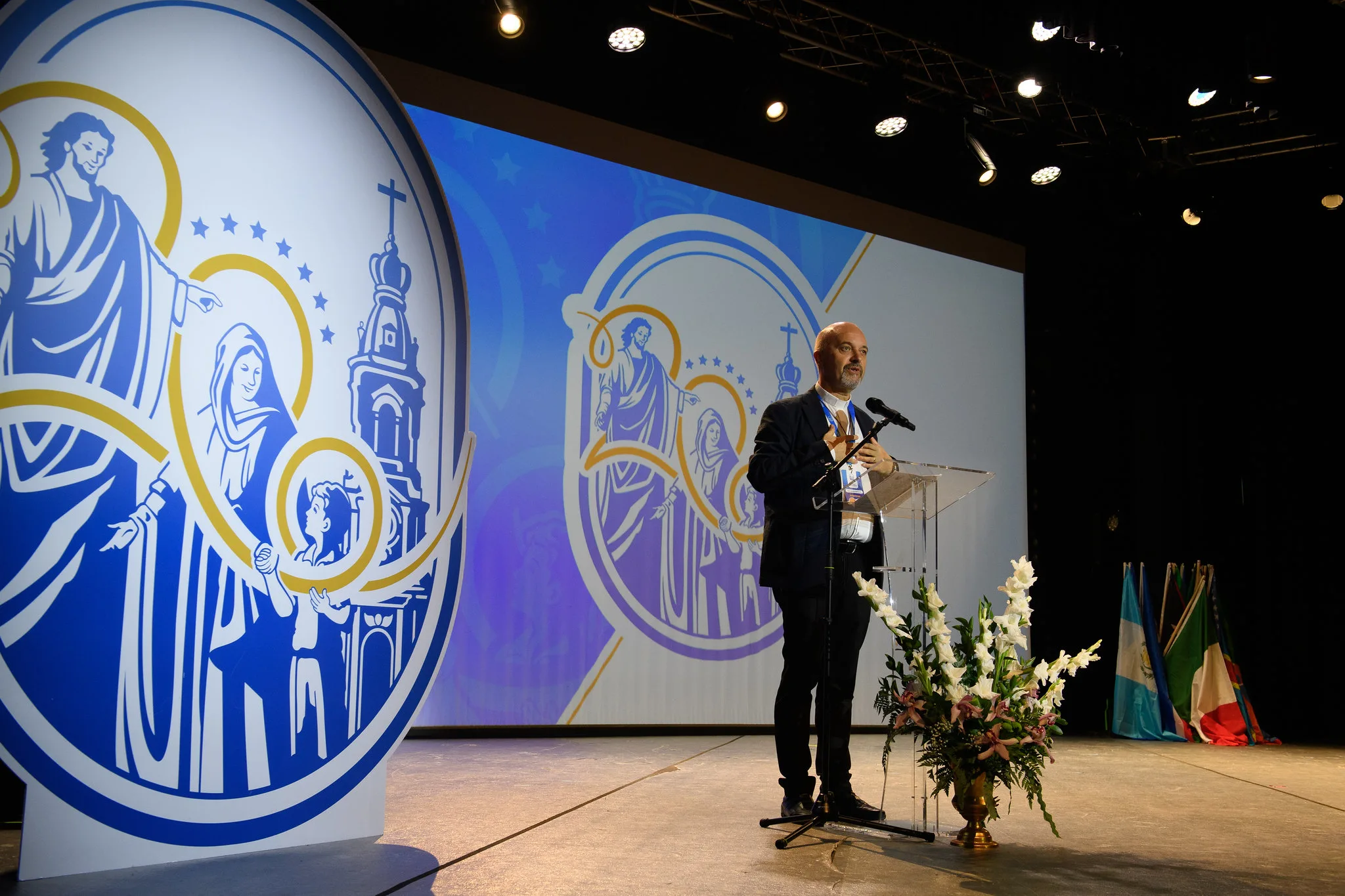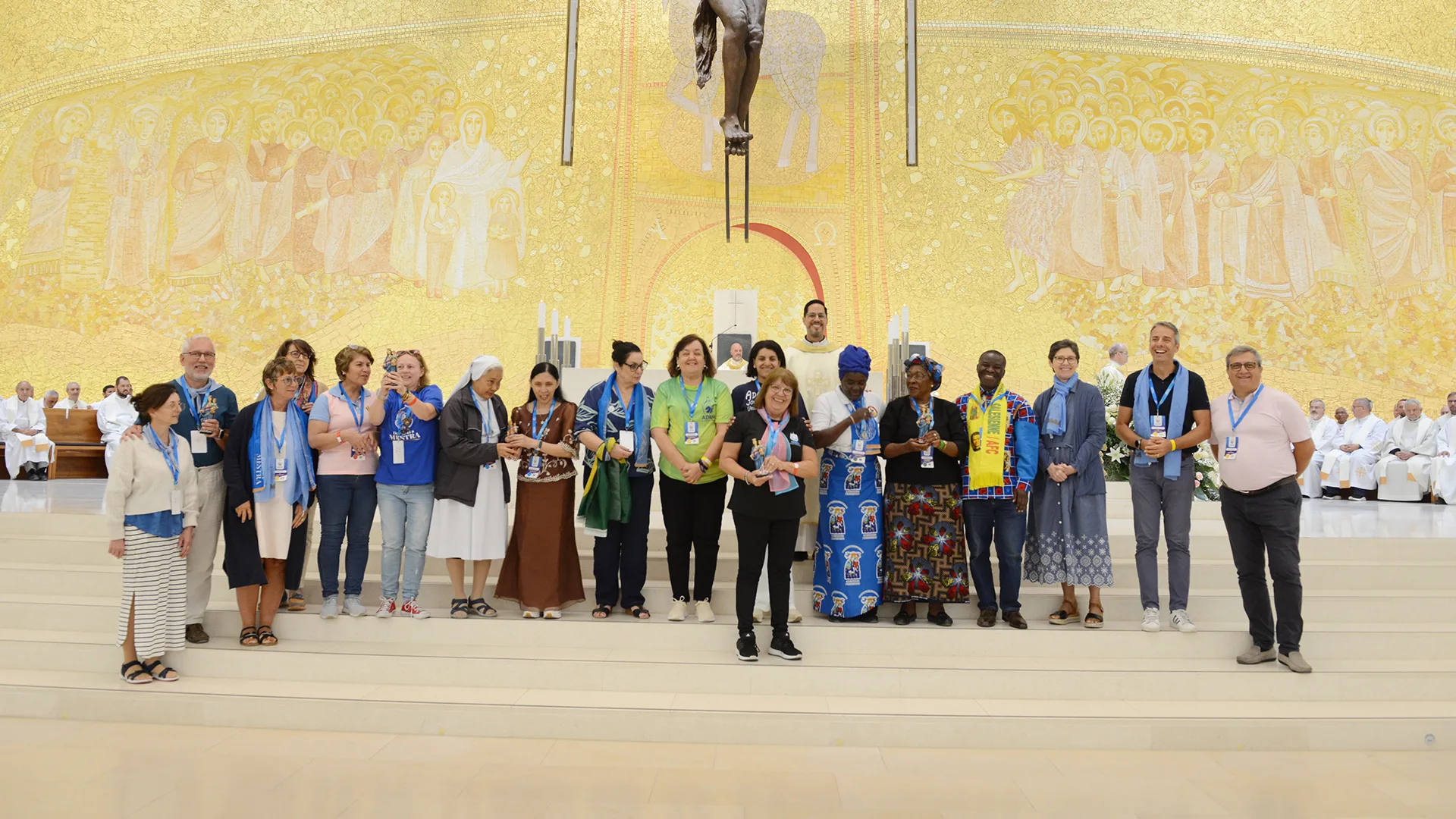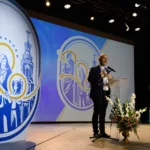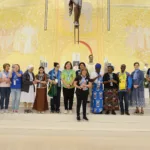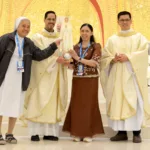It is indeed difficult to overestimate the importance of Mary’s presence and action in Don Bosco’s life and in the development of the Salesian charism. ‘She did everything’, the saint would in fact say at the end of his life, retracing with grateful memory the signs and events that had led him to be the father of a multitude of young people and educators. Scholars of the charism confirm, sources in hand, the Marian imprint that permeates all Salesian work both in its spiritual aspects and in its pastoral repercussions.
The story of the dream at 9 represents, in dramatic form, the reality and meaning of this presence. Two words in particular are used by Don Bosco to describe Mary’s role in his life: ‘Mother’ and ‘Teacher’. Two titles that make explicit the typically Salesian form of that maternal mediation of Mary, which concerns every believer as a son/daughter of God.
The tradition of the Church, in fact, recognised very early on in the Johannine scene of the beloved disciple and the mother at the foot of the Cross, a symbolic scene, which does not only concern the historical figure of Jesus’ beloved disciple but also represents every disciple who finds within himself the courage to follow Christ to the cross, to be renewed by his sacrifice. John’s gospel, in fact, anticipates Pentecost at Calvary: When Jesus breathes his last, he pours out the Spirit on those at his feet, the first cell of the Church: the Mother, the disciple and the other women. The blow of the soldier’s spear that opens his side, causing blood and water to flow out, prefigures the sacraments of baptism and the Eucharist, which allow the believer to enter God’s heart and be regenerated by Him as son and daughter. In this framework, the mutual entrustment between the Mother and the disciple takes on a special value. Mary, in fact, represents the Church that welcomes and leads to Jesus. To every baptised person, she is given as Mother, to help in the journey of faith that, just as it was for the Master, the disciple too goes through happy and sad pages, sustained by the certainty of the Father’s love, which is also reflected in Mary’s maternal care and tenderness.
In the dream at 9, the figure of Mary appears precisely at the moment when the situation seems to become very difficult for little John. ‘Making difficult things easy’, Don Bosco would later teach his youngsters, is one of Mary’s tasks. But let us return to the story of the dream: little John, upset by the bad behaviour of his companions, throws himself into their midst, trying to stop them with kicks and punches. A mysterious man dressed in light intervenes to stop him. Don Bosco never calls him by name, perhaps out of modesty, perhaps to heighten the suspense, indulging his natural narrative instinct. The listener, however, fails to understand that it is the Risen Christ. The Lord invites the child to approach his fellow disciples with love, and not with violence. The guidance appears impossible to the child. Precisely in the face of his protests, the man refers to an equally mysterious teacher from whom the child can learn the impossible.
We will dwell on the title ‘Teacher’ in more detail in the next meditation. For now, I would like to focus on the relational dynamic that emerges from the dream as characteristic of the relationship between John and Mary. As in the biblical scene of the cross, in the dream it is Jesus who entrusts the Mother to the disciple and the disciple to the Mother. Mary, moreover, does not enter the scene on her own initiative: it is the Son who invites her and gives her a task, that of taking care of John, an action that can only succeed if she finds the child’s collaboration. He too, in fact, is given a task, namely that of recognising the authoritativeness of the Mother and Teacher, of trusting Her and being docile to Her teachings.
In the course of the dream, it is evident that this task is yet to be accomplished. The child, in fact, does not seem to recognise either the man or the Lady. The non-recognition prevents, at the moment, the trusting entrustment and the child is gripped by anguish before the prospect of a mission that totally surpasses him. The closeness of the Mother, her reassuring tone, the tenderness with which she takes him by the hand, first, and then lays a hand on his head, fail to comfort his heart, or prevent him from bursting into tears.
The only fixed point, in the complicated situation presented by the dream, seems to be for the child the reference to the earthly mother, Margaret. The Lord refers to her first, in an attempt to help John decipher what is happening: ‘I am the Son of Her whom your mother taught you to greet three times a day’. The child is referred back to a custom of daily life, the prayer of the Angelus, as if to say: ‘You know who I am, just as you already know my Mother, whom I am about to give you as your teacher! Margaret has already told you about us, she has already introduced you to this relationship of faith and trust!’. John, however, seems not to catch the reference. He becomes defensive and responds to the evocation of a mother’s teaching with the affirmation of another teaching: ‘My mother tells me not to associate with those I do not know, without her permission; so, tell me your name’. The adult Don Bosco, here, offers us the opportunity to meet the frightened child he was. His response in the dream is extremely realistic and consistent with what we know of his arduous and gradual journey of vocational discernment. The dream, in other words, is certainly a gift of light, illuminating the path, but, like any gift from God, it does not exempt one from the fatigue of discernment. Little John is not a superhero, he is not a miniature adult. He is a real child, animated by a great desire to do good for his companions, but at the same time in need of the care and protection of his mother, the one in the flesh, before that of Heaven.
Don Bosco’s testimony and historical studies confirm that Margaret was truly the earthly mediation of Mary’s heavenly love, both in her journey of faith and in the development of her educational system and the work of the Oratory. The presence and action of these two mothers indelibly marked John’s emotional development, his way of dealing with people, and also his very positive view of women and their role in the life of the Church and society.
The maternal presence of Mary in Don Bosco’s dreams returns throughout the course of his life. When one tries to read these testimonies in chronological order, one can easily see how John’s attitude towards the Mother of the Lord matured over time. He took seriously the task entrusted to him by the Lord, namely to cultivate a relationship of reciprocity with Mary, to progressively entrust himself to her, to let himself be inspired and guided by her, to trust in her help and protection. And this experience is what he passed on to his children through the testimony of his words and his ability to wisely use signs – the medals; the rosary; the images of Mary – to educate the Oratory children to recognise Mary’s invisible presence in their daily lives.
Mary was able to ‘do everything’ in the development of the Salesian work because John allowed her to be Mother and Teacher to him. The impressive flowering of the charism is concrete proof that both took seriously the words spoken by the Lord Jesus in the dream. In our homes, in our families, in our educational and pastoral works: when we feel tired, unmotivated, when we feel that the charism is weak and faded, let us question the space we give to Mary and the quality of our relationship with her. ‘It is she who has done everything’ and her task is to ‘make difficult things easy’, which is why it is to her that we can turn whenever we feel the need to start again!
Linda Pocher FMA



